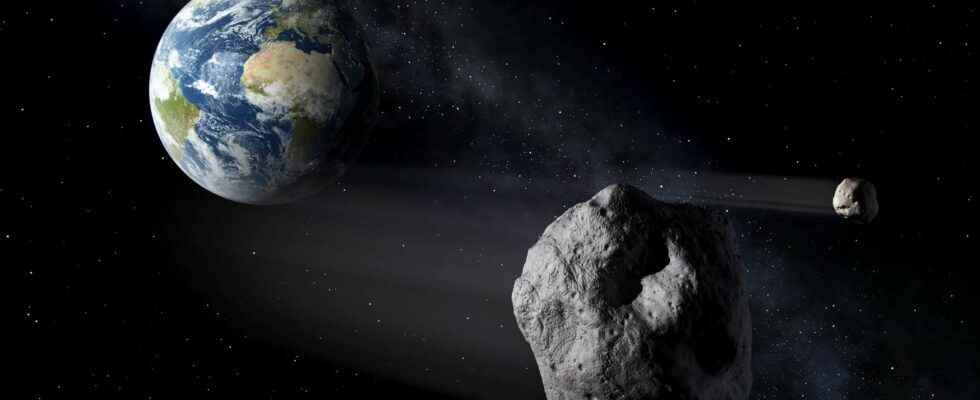While the planets of our System revolve around the Sun in a well-oiled merry-go-round, certain asteroids play the spoilsports. Crossing Earth’s orbit, they pose a potential threat to us. But what is the extent of this threat?
You will also be interested
[EN VIDÉO] The Asteroid Threat and How to Deal With It Among the many asteroids orbiting the sun, some sometimes come a little too close to our planet. Scientists watch and develop strategies to avoid a catastrophe. © Esa
Asteroids are rocky celestial bodies that orbit around the Sun remaining, generally, confined within the Main Asteroid Belt. But some of them venture a little too close to us and are therefore called Near-Earth Objects (NEO), or NEOs. They are classified into three categories:
- Amor asteroids cross the orbit of March, but not that of the Earth, which they only graze. In the strict sense of the term, they are therefore not near-Earth cruisers, but they are indeed NEOs.
- The Apollo asteroids follow an orbit located mainly outside that of the Earth, which they sometimes cut.
- The Aton asteroids which evolve almost permanently between the Sun and the Earth.
How many potentially dangerous asteroids?
In reality, the NEOs, which come to cut the orbit of the Earth, can be comets and asteroids. At present, there are about a hundred comets and more than 20,000 asteroids of this type. These numbers are constantly evolving, as new objects are identified. About 1,900 asteroids are classified potentially dangerousbut the data from program Near-Earth Object Wide-field Infrared Survey Explorer (Neowise) of the Nasa suggest that there would be some 4,700. By definition, the average diameter of asteroids considered potentially dangerous exceeds 140 meters and their orbit takes them within 0.05 astronomical units (AU), or 7.5 million kilometers, from Earth.
The largest near-Earth asteroid known to date is named 1036 Ganymedelike the moon of Jupiter. Discovered in 1924, it measures around thirty kilometers in diameter and will pass closest to the Earth, at around 0.4 AU, in 2024. Until then, the title of the largest asteroid that has ever touched Earth goes to Florence. , with 5 km in diameter, passed close to our planet in 2017. The one that aroused the most fear is undoubtedly Apophis : a collision with the Earth, planned for 2036, will however not take place and any risk has been ruled out by NASA.
If asteroids are so scary, it’s because they can wipe out all life on Earth. But impacts from asteroids over 10 km in diameter, like the one that contributed to theextinction of the dinosaurs, are rare. They occur on average once every 100 million years.
Anticipate and avoid asteroid impacts
Many programs track asteroids, such as Panstarrs, Neowiseor the Cneos (Center for Near-Earth Objects Studies), under the supervision of NASA. To assess the threat they represent for our dear blue planet, with the obvious aim of being able to react in time if the risk of collision were proven, we use, among other things, the Palermo and Turin scales. The first is logarithmic: threatening objects are assigned a positive value, the others negative. The Turin scale goes from 0 to 10, 10 being synonymous with planetary catastrophe… Thus, the famous Apophisranked 4 at the start, was downgraded to 0, the risk being nil.
Deflecting or destroying asteroids that could hit Earth is a real challenge. The scenarios envisaged seem straight out of science fiction films, but they are nevertheless seriously studied: deflect them by pushing them, for example with spacecraft ; spray them with nuclear bomb or with a laseretc.
Interested in what you just read?
